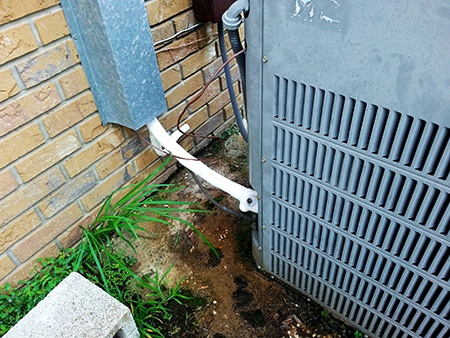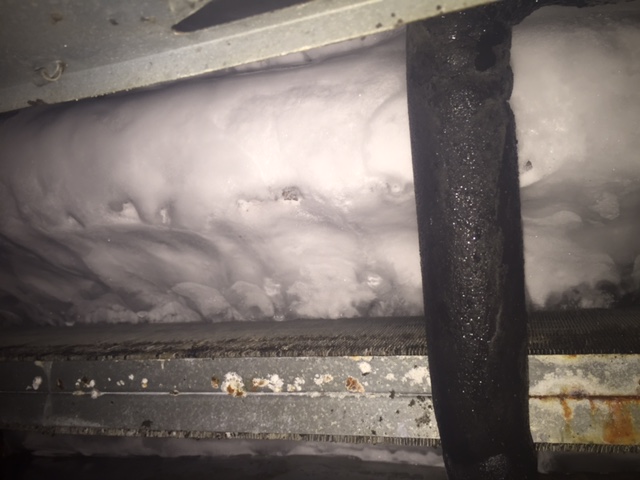Icy Air Conditioner Pipe - Causes and How to Resolve the Problem
Icy Air Conditioner Pipe - Causes and How to Resolve the Problem
Blog Article
This post which follows relating to How can I fix an air conditioner’s frozen pipe? is relatively informative. Check it out for yourself and figure out what you think about it.

Intro
Discovering that your a/c pipeline is frozen can be worrying, specifically throughout warm summertime when you rely on your air conditioner the most. Comprehending what to do in such a scenario is critical to stop more damage to your air conditioning system and ensure your convenience indoors.
Comprehending the Causes
Several factors can add to the cold of an air conditioning pipe. Comprehending these reasons can help you attend to the concern efficiently.
Lack of Airflow
One common reason for a frozen a/c pipe is inadequate air movement. When the air movement over the evaporator coil is limited, it can cause the coil to go down below freezing temperature, leading to ice development on the pipe.
Reduced Refrigerant Levels
Not enough cooling agent levels in your air conditioner system can additionally cause a frozen pipeline. Low refrigerant degrees can trigger the pressure in the system to go down, bring about the freezing of dampness on the evaporator coil.
Cold Weather Conditions
In cooler climates, freezing temperature levels outside can add to the freezing of a/c pipelines. If your air conditioning device is not correctly insulated or if there are leakages in the ductwork, chilly air can infiltrate the system, triggering the pipeline to freeze.
Dirty Air Filters
Filthy or blocked air filters can limit air movement in your AC system, bring about numerous issues, including an icy pipeline. It's important to replace or clean your air filterings system on a regular basis to guarantee correct air flow and protect against ice accumulation.
Indicators of a Frozen Air Conditioner Pipe
Acknowledging the indicators of a frozen air conditioning pipeline is critical for prompt action.
Minimized Airflow
If you observe a substantial decline in air movement from your vents, it can show an icy pipeline.
Ice Buildup on the Pipe
Noticeable ice accumulation on the refrigerant line or the evaporator coil is a clear indication of a frozen AC pipeline.
Weird Sounds from the Unit
Uncommon noises, such as hissing or bubbling, originating from your a/c system can signal that there's ice existing on the pipe.
Immediate Actions to Take
When confronted with an icy AC pipeline, it's important to act quickly to stop further damages to your cooling system.
Switching off the air conditioner
The very first step is to turn off your ac unit to avoid the system from running and aggravating the concern.
Looking for Blockages
Evaluate the location around the indoor device for any type of blockages that might be obstructing air movement, such as furniture or curtains.
Thawing the Pipe
You can use gentle techniques like putting towels soaked in warm water around the frozen pipe to aid thaw it gradually.
Safety nets
Taking safety nets can help prevent future incidents of a frozen air conditioning pipe.
When DIY Methods Fail
If your efforts to thaw the pipeline or address other issues are not successful, it's time to call an expert.
Significance of Hiring a Professional HVAC Technician
A certified HVAC professional has the experience and tools required to identify and repair problems with your a/c system safely and successfully.
Regular Maintenance Checks
Schedule routine maintenance checks with a specialist HVAC service technician to ensure that your a/c system is running successfully.
Altering Air Filters
Regularly change or clean your air filters to prevent air movement restrictions and maintain optimal performance.
Shielding Exposed Pipes
If your air conditioner pipelines are revealed to cool temperature levels, take into consideration insulating them to avoid cold during winter months.
Looking For Professional Help
If DIY approaches fall short to resolve the issue or if you're uncertain regarding just how to proceed, it's finest to look for assistance from a qualified HVAC technician.
Conclusion
Handling an icy air conditioner pipe can be a frustrating experience, but recognizing just how to react can assist decrease damages and restore comfort to your home. By recognizing the reasons, recognizing the indications, and taking timely activity, you can efficiently resolve the problem and avoid future events.
Frozen AC Line: Why It Happens & What To Do About It
A frozen AC line can be a rather peculiar sight in a place like Phoenix, Arizona where nothing ever freezes. In this post, we’ll discuss what makes an air conditioner line frozen – and what you can do about it.
Dirty Air Filters
Did you know that you should be cleaning or replacing your air filters on a monthly basis? Failing to do this can result in airflow issues that, in turn, cause your evaporator coils and lines to freeze over. You’ll notice a buildup of ice on both components, although the buildup on your pipes will, of course, be more evident unless you open your air condition up to reveal the coils.
What To Do About It
Give your air filter a good cleaning if it’s reusable. If not, replace the filter outright. Next, switch your air conditioner’s fan setting on and leave it there for 2-3 hours. This will draw warm air in, helping to thaw your evaporator coil. You can also check out this article for some tips on cleaning the coils themselves if you’d like to speed the process up. Before you switch the unit back to its normal state, make sure the supply vents are completely unobstructed and free of dust or other debris.
If you keep having this issue even after replacing your filters regularly, contact a local HVAC repair company and have them inspect your evaporator coil, ductwork, and any other components that may be at fault. If you live in the Phoenix, Arizona area, give American Home Water and Air a call.
Low Refrigerant Levels/Leakage
What To Do About It
Contrary to what air conditioner “recharge” companies often tell their clients about refrigerant, it should never need to be simply refilled. You see, refrigerant runs in what experts refer to as a “closed loop.” Refrigerant really shouldn’t be leaving that loop. If it is, you’ve got a leak.
Paying someone to come and pump more refrigerant into your system (aka “recharge” it) isn’t the solution. Doing that will simply kick the can down the road. Besides, refrigerant leaks can be harmful to the environment and people in your home.
Rather, you need to take care of the leak with the help of a technician. Check out this article for some more information about dealing with air conditioners that are leaking refrigerant. Before you contact a technician, switch your thermostat to the off position. Then, switch the fan setting on and let it run for 2-3 hours so the unit can thaw.
Improper Temperature Setting
Improper temperature settings can also cause a drop in your air conditioner’s pressure. What many people don’t realize is that air conditioners are actually designed to run when temperatures have fallen above roughly 60 degrees Fahrenheit. If you run the unit when it’s cold outside, you’ll run into many issues, including frozen components.

I stumbled upon that write up on What Do I Do If My AC Pipe Is Frozen while doing a search on the internet. If you enjoyed our blog entry kindly don't forget to share it. Thank-you for taking the time to read it.
Visit Link Report this page